|
Copyright, Attention: This website and its contents contain intellectual property copyright materials and works belonging to the National First Ladies’ Library and Historic Site and to other third parties. Please do not plagiarize. If you use a direct quote from our website please cite your reference and provide a link back to the source.
First Lady Biography: Dolley Madison
 DOLLEY PAYNE TODD MADISON
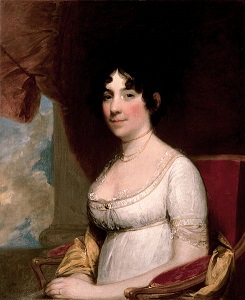 Born: Born:
Place: Guilford County, North Carolina
Date: 1768, May 20
 Father Father
John Payne, born, 1736, Goochland County, Virginia; believed to have initially been a planter; once he emancipated his slaves ( according to then-prevailing Quaker belief ) and moved to Philadelphia in 1783, Payne opened a small laundry starch-making business which failed. He died, 1792, October 24.
Mother:
Mary Coles Payne, born 1745, married 1761 in Hanover County, Virginia; Mary Coles was a Quaker, John Payne an Episcopalian. In 1764, he applied for membership in her meeting house and was accepted. In 1766, they moved to North Carolina with other Quaker families. In 1769, they returned to Virginia. In 1783, they settled in Philadelphia.
After her husband's 1792 death, Mary Payne briefly opened their home to boarders, including Congressman Aaron Burr of New York. Several years later, Burr introduced the widowed Dolley Todd to Congressman James Madison of Virginia. In 1793 Mary Payne moved to " Harewood, " the home of her daughter Lucy Washington, in Berkeley Springs, West Virginia. She died at home of Mary Jackson, in October 1807.
Ancestry:
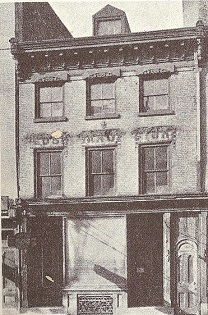 Irish, Scottish, French, English; Dolley Madison's maternal grandfather, William Coles, was born in 1703 in Enniscarthy, Ireland, immigrated to and died in Virginia in 1781. Her paternal great-great grandfather John Fleming was born in Scotland in 1627, immigrated to and died in Virginia in 1686. Her paternal great-great-great grandfather John Payne was born in 1615 in England and immigrated to and died in Virginia in 1690. Her paternal great-great-great grandparents Cornelius Dabney ( born, 1640 ) and Susanna Swan ( born, 1644 ) were born in France and immigrated to and died in Virginia. Irish, Scottish, French, English; Dolley Madison's maternal grandfather, William Coles, was born in 1703 in Enniscarthy, Ireland, immigrated to and died in Virginia in 1781. Her paternal great-great grandfather John Fleming was born in Scotland in 1627, immigrated to and died in Virginia in 1686. Her paternal great-great-great grandfather John Payne was born in 1615 in England and immigrated to and died in Virginia in 1690. Her paternal great-great-great grandparents Cornelius Dabney ( born, 1640 ) and Susanna Swan ( born, 1644 ) were born in France and immigrated to and died in Virginia.
Birth Order and siblings:
Fourth of eight children; Four brothers, three sisters; Walter Payne ( early 1760's -1784 ), William Temple Payne ( mid-1760's-1795 ), Isaac Payne ( mid-1760's-1795 ), Lucy Payne Washington Todd ( 1777-1846 ), Anna Payne Cutts ( 1779-1832 ), Mary " Polly " Payne Jackson ( 1781-1808 ), John C. Payne ( born in 1782, death date unknown ). Her sister Lucy was first married to George Steptoe Washington, the nephew of the first President, and married secondly, Thomas Todd, a U.S. Supreme Court Associate Justice. Her sister Mary was married to John George Jackson, U.S. Congressman ( Virginia ). Her sister Anna was married to Richard Cutts, U.S. Congressman ( Massachusetts ).
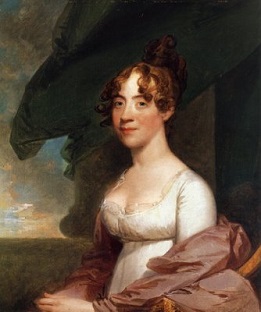 Physical Appearance: Physical Appearance:
5' 6 1/2" tall, black hair, blue eyes
Religious Affiliation:
Born into the Quaker faith, but expelled after her marriage to non-Quaker James Madison; attended Episcopalian services, and was confirmed in that faith in 1845, July 15 at St. John's Church, Washington, D.C.
Education:
 No record exists of any formal education; although Philadelphia's Pine Street Meeting, to which the Paynes belonged, did offer class instructions for girls as well as boys, Dolley Payne was 15 years old at the time she moved to Philadelphia and was past the usual age for school. No record exists of any formal education; although Philadelphia's Pine Street Meeting, to which the Paynes belonged, did offer class instructions for girls as well as boys, Dolley Payne was 15 years old at the time she moved to Philadelphia and was past the usual age for school.
Occupation before Marriage: There is no indication that Dolley Payne worked in her father's starch business or other occupation.
Marriage:
First:
21 years old, married 1790, January 7 at Pine Street Meeting House, Philadelphia, Pennsylvania to John Todd, lawyer ( 1763-1793 ); they lived in a modest three-story brick house at the corner of Fourth and Walnut Streets; Todd died in a yellow fever epidemic, 1793, October 14
 Second: Second:
26 years old, married 1794, September 15, "Harewood" estate, Charles Town, West Virginia to James Madison ( 1751-1836 ), planter, U.S. Congressman ( Virginia ); following their wedding, lived in Madison's elegant three-story Spruce Streetbrick house until his retirement in 1797, when they moved to the Madison family plantation, "Montpelier," in Orange, Virginia.
Children:
By First Marriage:
Two sons; John Payne Todd, ( 1792-1852 ), William Isaac Todd, ( 1793 ), died at three months old, the same day as his father.
Her surviving son, always known by the name of Payne, would come to live with his mother and her second husband, James Madison at his plantation home in Orange, Virginia, “ Montpelier. ” During the presidential years, he would be placed in the nearby St. John’s College, in Maryland but failed as a student.
In an attempt to give Payne a sense of purpose, his step-father sent him as part of the American diplomatic mission which negotiated the Treaty of Ghent and ended the War of 1812. However, he left the delegation and made his way across Europe, beginning a lifelong addiction to gambling and alcohol.
 While James Madison was alive, he kept from Dolley Madison the huge debts run up by her son. After she was widowed, however, Dolley Madison was confronted with the financial ruin created by her son, eventually sending her to the brink of poverty. While James Madison was alive, he kept from Dolley Madison the huge debts run up by her son. After she was widowed, however, Dolley Madison was confronted with the financial ruin created by her son, eventually sending her to the brink of poverty.
By Second Marriage:
None
Occupation after Marriage:
Although she assumed the traditional role of wife and housekeeper following her first marriage, Dolley Todd also had the assistance of her younger sister Anna, who lived with her and there is suggestion that she was of help to John Todd in his legal work. Following her second marriage and then her 1797 move to Madison's Virginia estate, Dolley Madison assumed not only household management of the plantation and slaves, but also cared for her elderly mother-in-law who lived there.
James Madison served as Secretary of State in the Administration of his friend, President Thomas Jefferson, from 1801 to 1809, and the Madisons moved to Washington, D.C.
At those receptions and dinners which the widowed President felt necessitated a female co-host, he asked Dolley Madison to aide him. While she was not a presidential wife or in any way given an official designation, her exposure to the political and diplomatic figures who were guests of the President, as well as to the general public who came to meet him, provided her with a lengthy experience as a White House hostess. Notably, she also took a large public role in the fundraising effort that supported the exploration of the Louisiana Territory by explorers Lewis and Clark. These eight years of fore-knowledge and opportunity to consciously create her own public persona were the crucial factor that enabled her to shape what was only a marital relationship to the President into a genuine public role that was soon called "Presidentress" by some chroniclers.
Presidential Campaign and Inauguration:
Dolley Madison's popularity as a hostess in Washington added greatly to the recognition of her husband by those members of congress whose electoral votes then chose the winner of presidential races. During the 1808 election, however, there was an attempt by Federalist newspapers in Baltimore and Boston that implied Mrs. Madison had been intimate with President Jefferson as a way of attacking her character. Her popularity prevailed during the 1812 election.
 In preparation for the inaugural ceremonies of James Madison on March 4, 1809, Captain Tom Tingey, commandant of the Washington Navy Yard, had requested Dolley Madison's permission and sponsorship of a dance and dinner, and she readily agreed; thus, the first presidential " inaugural ball " took place that evening. Held at Long's Hotel, on Capitol Hill, there were four hundred guests in attendance. The event began at 7 p.m., opening with the playing of " Jefferson's March, " followed by the entrance of the former President. Next, " Madison's March, " was played and the new president and his wife entered. Dressed in a buff-colored velvet gown, wearing pearls and large plumes in a turban, Mrs. Madison made a dramatic impression. In preparation for the inaugural ceremonies of James Madison on March 4, 1809, Captain Tom Tingey, commandant of the Washington Navy Yard, had requested Dolley Madison's permission and sponsorship of a dance and dinner, and she readily agreed; thus, the first presidential " inaugural ball " took place that evening. Held at Long's Hotel, on Capitol Hill, there were four hundred guests in attendance. The event began at 7 p.m., opening with the playing of " Jefferson's March, " followed by the entrance of the former President. Next, " Madison's March, " was played and the new president and his wife entered. Dressed in a buff-colored velvet gown, wearing pearls and large plumes in a turban, Mrs. Madison made a dramatic impression.
Although she did not join in the dancing, her sister Anna Cutts " opened " that portion of the program. A formal dinner followed, and Dolley Madison took her place at the crescent-shaped table, seated between the French Minister, General Louis-Marie Turreau de Garambouville and the British Minister, David Montagu Erskine.
First Lady:
1809, March 4 - 1817, March 3
40 years old
With more conscious effort than either of her two predecessors, and with an enthusiasm for public life that neither of them had, Dolley Madison forged the highly public role as a President's wife, believing that the citizenry was her constituency as well as that of her husband's. This would establish her as the standard against which all her successors would be held, well into the mid-20th century. This persona was specifically created to serve the political fortunes of not only the President, but also of the United States. She would steer conversation with political figures, including their spouses, in a way that revealed their positions on issues facing the Madison Administration, or sought to convince them to consider the viewpoint of her husband.
 She fortified her role of hostess by the visual effect of both the executive mansion and her own person, redecorating the public rooms in a style grand enough to impress foreign diplomats and dressing in a regal, yet simple manner. She used her clothing style to make herself visibly distinct and define her own public identity, most notably by her trademark turban. She fortified her role of hostess by the visual effect of both the executive mansion and her own person, redecorating the public rooms in a style grand enough to impress foreign diplomats and dressing in a regal, yet simple manner. She used her clothing style to make herself visibly distinct and define her own public identity, most notably by her trademark turban.
Her ebullient personality, although often masking deep-seated worry, had the effect of relaxing her guests, regardless of their political views. Dolley Madison also exercised political influence by utilizing all the acceptable forms of behavior for women at the time, through correspondence, entertaining and cultivating personal alliances with the spouses of important political figures. On numerous occasions, she sought to place supporters, friends and family members into official government positions.
Dolley Madison was the first First Lady to formally associate herself with a specific public project; as a fundraiser, supporter and board member, she helped to found a Washington,D.C.home for young orphaned girls. She also befriended nuns from a local Catholic school and began a lifelong association with the organization.
To a degree larger than even Martha Washington, with whom the public had been familiar since the American Revolution Dolley Madison became a genuinely public celebrity. She was often referred to as “ Lady Madison, ” honored by having a ship named for her, being solicited by authors to help promote new books, and even depicted on a magazine cover.
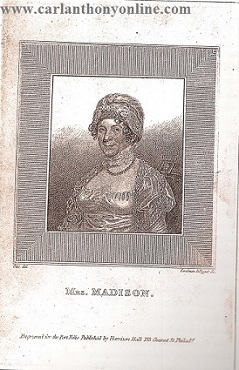 Her legend was made lasting, however, by her conscious act of symbolic patriotism in the hours preceding the burning of Washington by British troops during the War of 1812. She famously refused to leave the White House before being assured that the large portrait of George Washington was removed from the walls and taken safely away from potential destruction or defacing by the encroaching enemy. Her legend was made lasting, however, by her conscious act of symbolic patriotism in the hours preceding the burning of Washington by British troops during the War of 1812. She famously refused to leave the White House before being assured that the large portrait of George Washington was removed from the walls and taken safely away from potential destruction or defacing by the encroaching enemy.
 Undocumented legend contends that Dolley Madison sponsored an egg-rolling contest for children on or near the lawn of the nearly-completed Capitol Building, although it was at the time not yet landscaped. Undocumented legend contends that Dolley Madison sponsored an egg-rolling contest for children on or near the lawn of the nearly-completed Capitol Building, although it was at the time not yet landscaped.
Another claim, which has persisted, but for which there is no documentation, credits Dolley Madison with convincing the President to permit Washingtonian Francis Scott Key to board a truce ship in an effort to seek the freedom of a captured friend. Moreover, that when he did so, he witnessed the firing on Fort McHenry and wrote the poem which became the Star Spangled Banner.
 Finally, there is the suggestion that it was Dolley Madison who urged both the President and Congress to keep Washington as the capitol city, rather than permit it to be returned to Philadelphia. Contemporary accounts do record her rage at the British for burning her favorite city and she did resume her entertaining as a symbol of rebirth in Washington, in the two buildings that she and the President occupied in the capital for the duration of his Administration. Finally, there is the suggestion that it was Dolley Madison who urged both the President and Congress to keep Washington as the capitol city, rather than permit it to be returned to Philadelphia. Contemporary accounts do record her rage at the British for burning her favorite city and she did resume her entertaining as a symbol of rebirth in Washington, in the two buildings that she and the President occupied in the capital for the duration of his Administration.
 Dolley Madison is also widely credited, largely through legend, for popularizing the dessert of ice cream. It is established that she was unlikely the first to serve it at the White House. The Library of Congress, among other sources, however, retains a copy of Thomas Jefferson’s own recipe for ice cream. It was also known to be served by George and Martha Washington at Mount Vernon. However, there is at least one report of her serving a “ pink dome ” of ice cream in public to guests. Dolley Madison is also widely credited, largely through legend, for popularizing the dessert of ice cream. It is established that she was unlikely the first to serve it at the White House. The Library of Congress, among other sources, however, retains a copy of Thomas Jefferson’s own recipe for ice cream. It was also known to be served by George and Martha Washington at Mount Vernon. However, there is at least one report of her serving a “ pink dome ” of ice cream in public to guests.
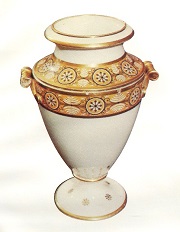 Post-Presidential Life: Post-Presidential Life:
While it was with great regret that Dolley Madison left Washington, D.C. she was also eager to enjoy the company of her beloved husband at his Virginia plantation, Montpelier.
 At Montpelier, Dolley Madison took an increased role as the predominant family member, caring for her increasingly infirm husband, while managing household improvements, the cultivation of foods by enslaved people which made the plantations self-sufficient, and welcoming both distinguished visitors and strangers who called there. At Montpelier, Dolley Madison took an increased role as the predominant family member, caring for her increasingly infirm husband, while managing household improvements, the cultivation of foods by enslaved people which made the plantations self-sufficient, and welcoming both distinguished visitors and strangers who called there.
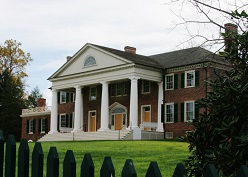 During their post-presidential years, she also aided her husband in the organization and preparation for public release of the papers he used in drafting the U.S. Constitution. Following his 1836 death and the increasing burden of vast debt accumulated by her irresponsible son, she was forced to sell their Virginia properties, including the Madison plantation Montpelier.In 1844, she returned permanently to Washington,D.C., living across from the White House in a row house owned by her former husband. Her near-poverty was alleviated only when Congress agreed to purchase part of her husband's papers. During their post-presidential years, she also aided her husband in the organization and preparation for public release of the papers he used in drafting the U.S. Constitution. Following his 1836 death and the increasing burden of vast debt accumulated by her irresponsible son, she was forced to sell their Virginia properties, including the Madison plantation Montpelier.In 1844, she returned permanently to Washington,D.C., living across from the White House in a row house owned by her former husband. Her near-poverty was alleviated only when Congress agreed to purchase part of her husband's papers.
 She was also awarded an honorary seat in Congress, permitting her to watch congressional debates from the floor, where members sat at their desks. She was, in addition, the first private citizen to transmit a message via telegraph, an honor given her by its inventor Samuel F. B. Morse. She was also awarded an honorary seat in Congress, permitting her to watch congressional debates from the floor, where members sat at their desks. She was, in addition, the first private citizen to transmit a message via telegraph, an honor given her by its inventor Samuel F. B. Morse.
 Even as a former First Lady, Dolley Madison continued to influence the evolving public role played by a presidential wife or official hostess. Incumbent First Ladies Julia Tyler and Sarah Polk, as well as the hostess for the invalid first Mrs. Tyler, her daughter-in-law Priscilla Cooper Tyler, all drew upon Mrs. Madison's advice on how to conduct their public role. Her last public appearance was on the arm of President James K. Polk at his last White House reception. Even as a former First Lady, Dolley Madison continued to influence the evolving public role played by a presidential wife or official hostess. Incumbent First Ladies Julia Tyler and Sarah Polk, as well as the hostess for the invalid first Mrs. Tyler, her daughter-in-law Priscilla Cooper Tyler, all drew upon Mrs. Madison's advice on how to conduct their public role. Her last public appearance was on the arm of President James K. Polk at his last White House reception.
 It was she who introduced Angelica Singleton, the daughter of a maternal first cousin, Rebecca Coles, to Abraham Van Buren, the son of widower President Martin Van Buren. The younger cousin thus became the First Lady for the Van Buren Administration. She maintained a close personal friendship with former First Lady Louisa Adams, also then living in Washington. It was she who introduced Angelica Singleton, the daughter of a maternal first cousin, Rebecca Coles, to Abraham Van Buren, the son of widower President Martin Van Buren. The younger cousin thus became the First Lady for the Van Buren Administration. She maintained a close personal friendship with former First Lady Louisa Adams, also then living in Washington.
As one who knew personally figures like Washington and Jefferson, Dolley Madison became a symbol of the Founding Era as the nation moved into the antebellum period. She would often be called on to recollect the lives of the founders and her personal collection of portraits, autograph letters and other associated objects became something of a private museum. She was also nevertheless insistent on having her own role during the War of 1812 remembered.
 Only in the latter 20th century would questions be raised about the validity of her specific account of how the Washington portrait was saved. The original letter in which she claimed to write her sister a detailed telling of her patriotic acts as they were unfolding in 1814 was somehow lost. It was her effort to reconstruct her alleged recollections some three decades later after the fact which remains the primary basis for the claim. Only in the latter 20th century would questions be raised about the validity of her specific account of how the Washington portrait was saved. The original letter in which she claimed to write her sister a detailed telling of her patriotic acts as they were unfolding in 1814 was somehow lost. It was her effort to reconstruct her alleged recollections some three decades later after the fact which remains the primary basis for the claim.
Death:
Her home, Washington ,D.C.
1849, July 12
81 years old
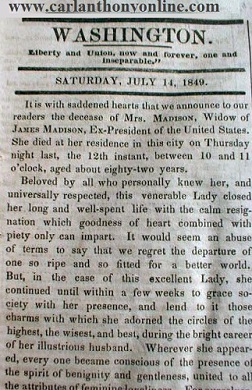 Burial: Burial:
Initially buried in the Congressional Cemetery, Washington, D.C., later re-interred at Montpelier estate, Orange, Virginia
*According to legend, it was at Dolley Madison's funeral that incumbent President Zachary Taylor eulogized her as "First Lady," perhaps thus being the first known use of the title in connection with a president's wife. No record of his eulogy is extant.
|